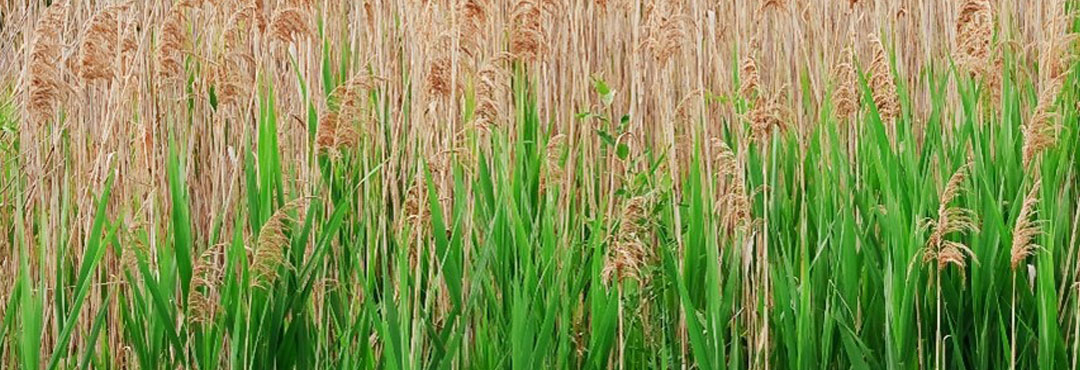Invasive Species Removal For Chicago, IL & Surrounding Areas
Invasive plant species cause ecological harm in a new environment where they are not native. Because they have no natural predators to consume them, invasive plants can reproduce and spread rampantly. In doing so, invasive plants outcompete and displace native plants and the many native wildlife species that depend on them for food and cover.
Invasive plant species not only decrease the biodiversity of native plants and animals, but they also alter the way an ecosystem functions, resulting in issues like flooding, soil erosion, and altered soil characteristics. With careful and consistent management, however, we can stop invasive plants from spreading and can even completely eradicate them from a property.
What is Invasive Species Removal?
Invasive species removal involves killing unwanted plants and preventing their reemergence. How invasive plant species are removed depends on the type of plant we are targeting.
Invasive Woody Plants
Common invasive trees and shrubs in our area include autumn olive, sandbar willow, honeysuckle, and common buckthorn. These grow into thick stands that prevent light from reaching the forest floor, minimize airflow and, in the case of buckthorn, emit a chemical that changes the soil chemistry and can be lethal to frogs and salamanders.
Look for these common invasive species:
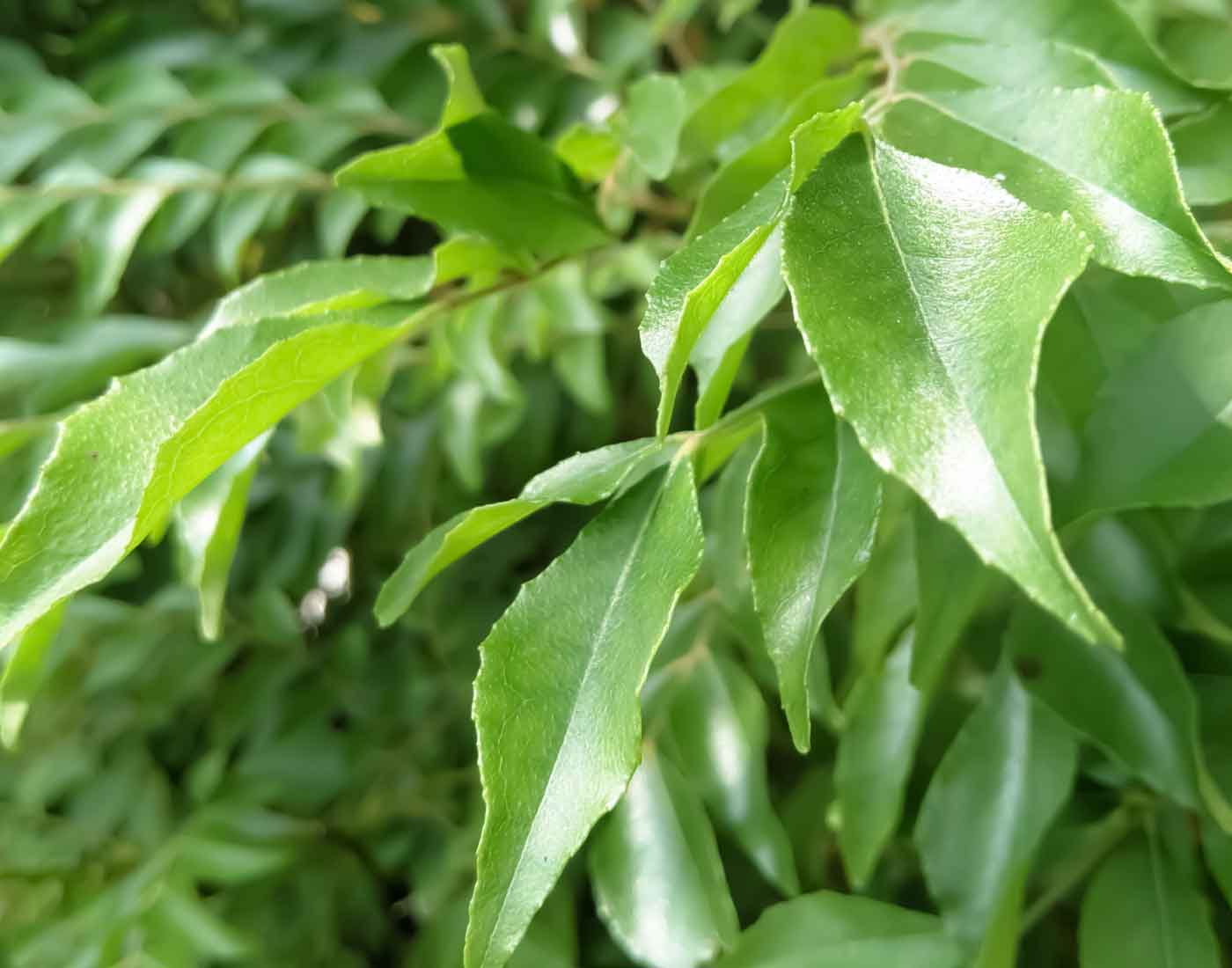
Autumn Olive (Elaeagnus umbellate)

Sandbar Willow (Salix interior)

Honeysuckle (Lonicera species)
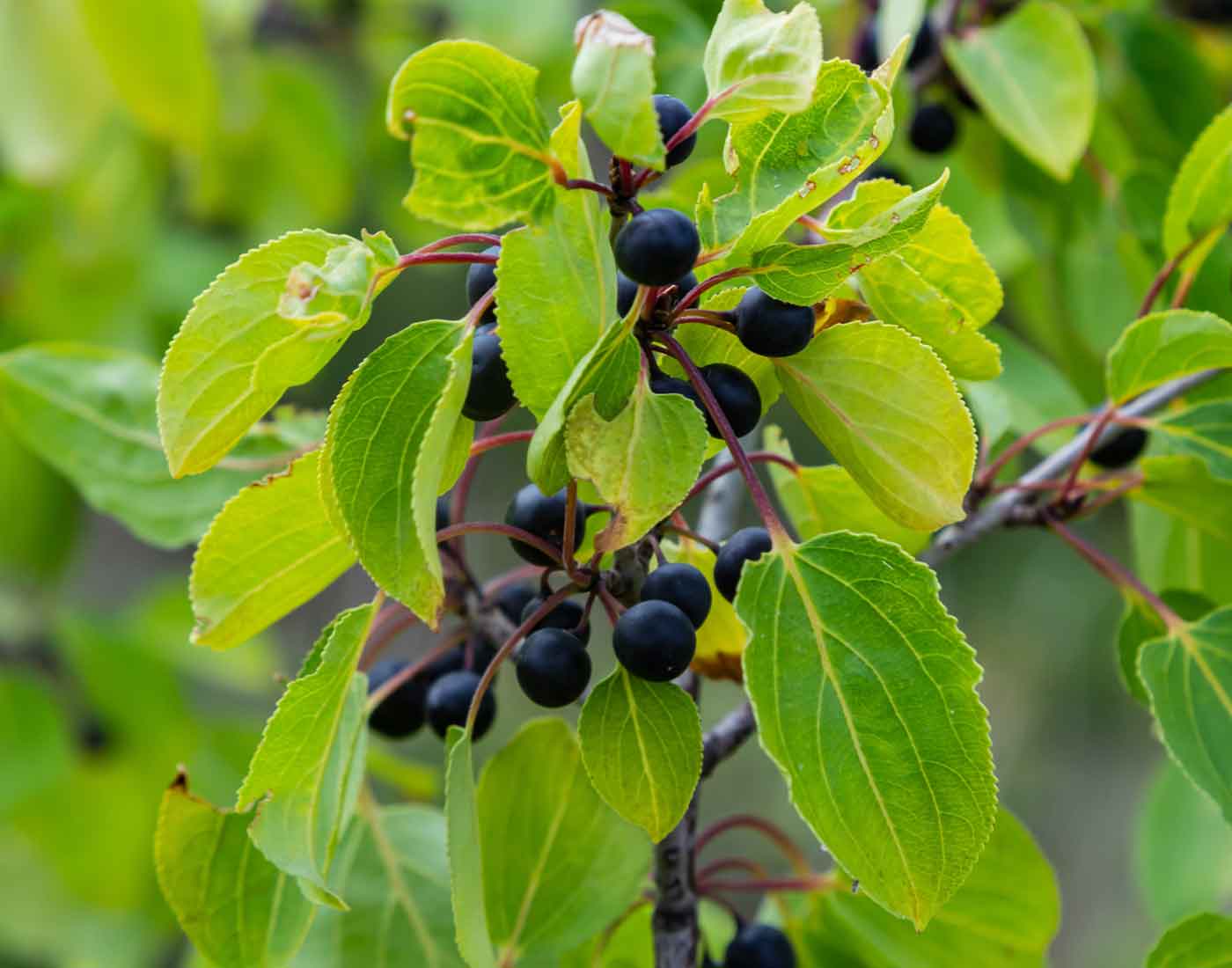
Common Buckthorn (Rhamnus cathartica)
Mechanical Removal of Invasive Woody Plants
Removal of large stands of woody invasive species, like buckthorn and autumn olive, is often done mechanically. We commonly use a skid steer or mini excavator with a Forestry mower attachment. This work is best done in the winter when there is little chance of disturbing desired native plant species or compacting the soil.
Mini excavator with Fecon attachment
In wet environments, where woody invasive species like sandbar willow can dominate, an amphibious excavator with a forestry mower attachment is used instead. The low ground pressure of amphibious equipment allows us to work in difficult, wet sites without compacting the soil or sinking.
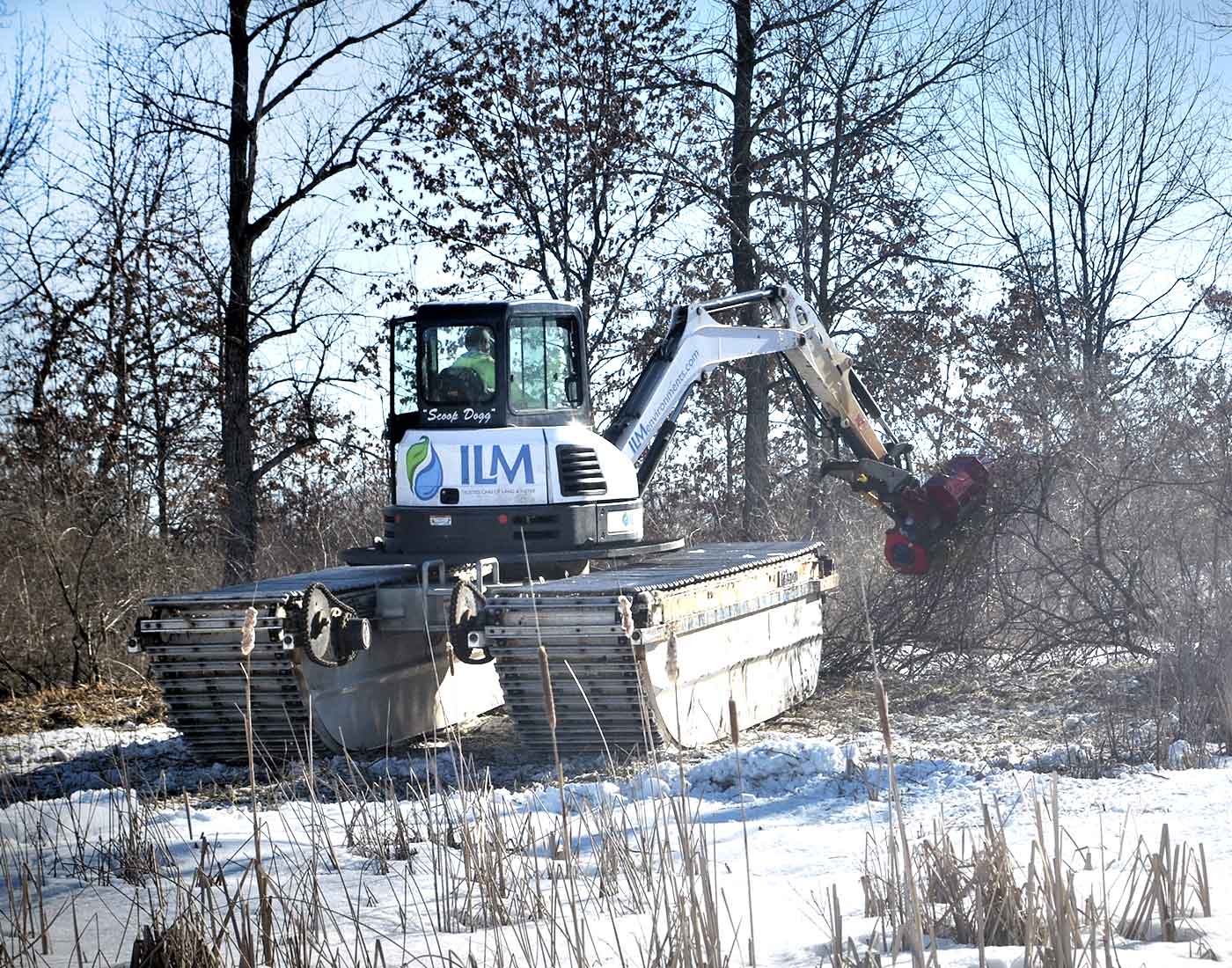
Amphibious excavator working in a wetland
For smaller sites or sites too tight for mechanical equipment, invasive woody trees and shrubs are cut by hand using chainsaws. Regardless of the method used, all stumps need to be treated with an EPA-approved herbicide to prevent the plants from growing back.
Girdling large trees is another woody invasive species removal option where we strip off the bark and cambium in a ring extending entirely around a trunk or stem, cutting in enough to interrupt the flow of sap.
Invasive Grasses and Flowering Plants
Familiar Midwest invasive grasses include reed canary grass and common reed. Garlic mustard, teasel, Canada thistle, purple loosestrife, and lesser celandine top the charts of invasive flowering plants.
Look for these common invasive species:
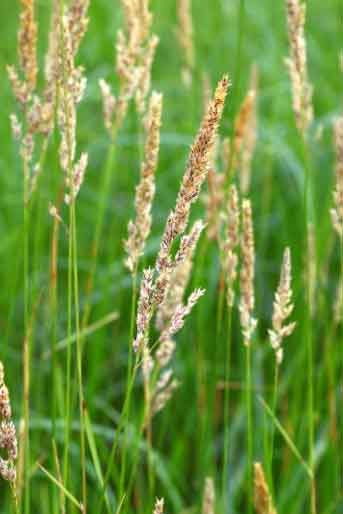
Reed Canary Grass
(Phalaris arundinacea)
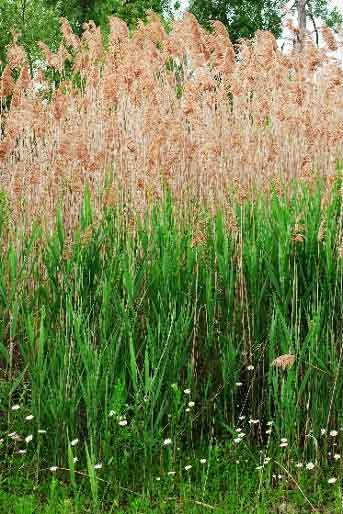
Common Reed
(Phragmites australis)
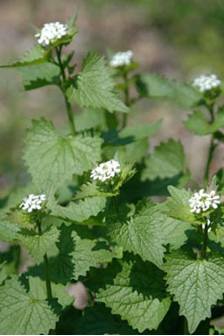
Garlic Mustard
(Alliaria petiolata)
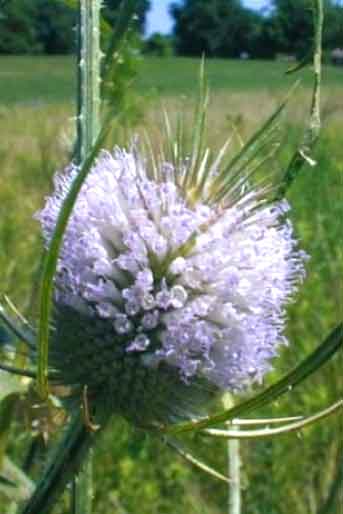
Teasel
(Dipsacus fullonum)
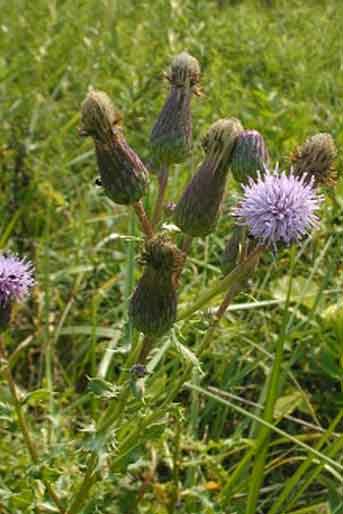
Canada Thistle
(Cirsium arvense)
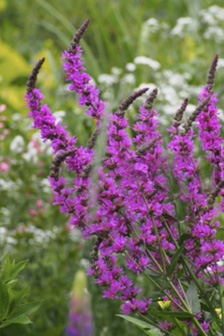
Purple Loosestrife
(Lythrum salicaria)

Lesser Celadine
(Ranunculus ficaria)
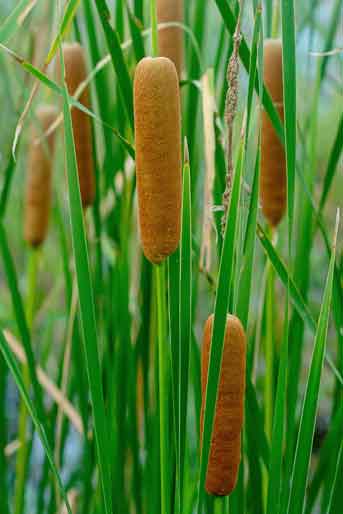
Narrow Leaf Cattail
(Typha Angustifolia)
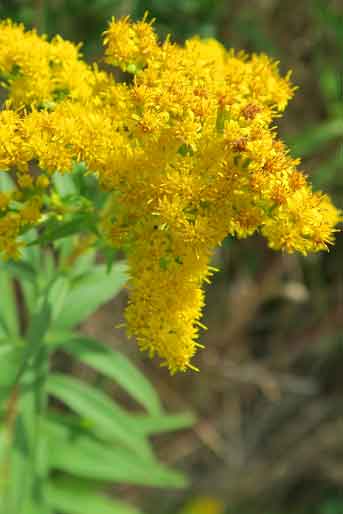
Seaside Goldenrod
(Solidago Sempervirens)
Depending on the species and the time of year, recommended control options include ecological mowing, prescribed burns, selective herbicide application, or a combination of methods. These control options are all used to ultimately eliminate invasive species while giving any native plants present a chance to reestablish. Ongoing stewardship to prevent invasive species from moving in and taking back over is typically recommended. The healthier the ecosystem, the better it can defend itself against invasive species.
Contact Us Today to Learn More About Limiting Invasive Species.
Interested in more information about Integrated Lakes Management’s invasive species removal services or looking for holistic strategies to care for your environment? We are happy to help you improve the beauty and health of your lake, pond, wetland, woodland, or prairie.

